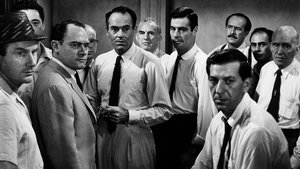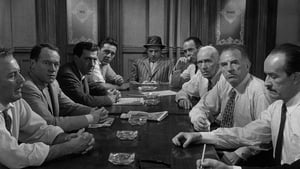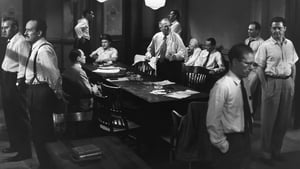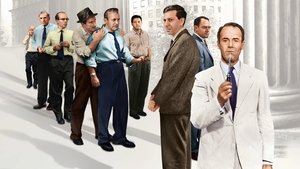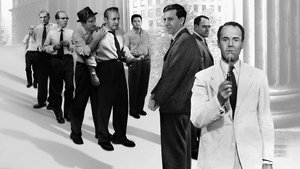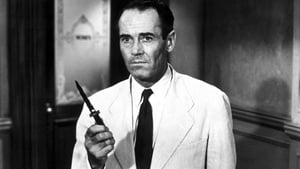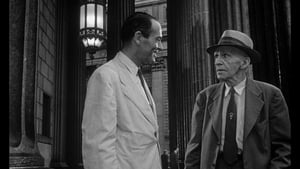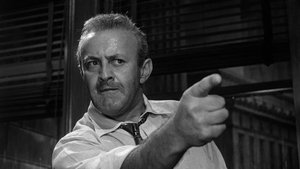Contact: info@alwanfilm.com
Video Sources 0 Views
- Watch trailer
- 12 Angry Men

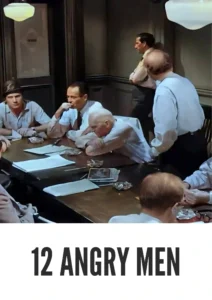
12 Angry Men 1957 Colorized
Synopsis
Table of Contents
ToggleDeliberating Justice: A Review of 12 Angry Men 1957 Colorized

Introduction
In the pantheon of classic cinema, few films hold as much acclaim and significance as “12 Angry Men 1957 Colorized.” This gripping courtroom drama, directed by Sidney Lumet, has long been celebrated for its powerful performances and thought-provoking exploration of justice and morality. Now, with the release of an early colored version, audiences have the opportunity to experience this timeless masterpiece in a new light. In this comprehensive review, we will delve into the world of “12 Angry Men 1957 Colorized,” examining its director’s vision, the stellar cast, and the controversy surrounding its colorized release.
Check The Full Colorized Movies List
Check Our Colorized Movies Trailer Channel
Understanding 12 Angry Men 1957 Colorized: Director, Cast, and Genre
Sidney Lumet’s directorial debut, “12 Angry Men,” stands as a testament to his skill and craftsmanship. The film, set entirely within the confines of a jury deliberation room, unfolds in real-time as twelve jurors, each with their own biases and preconceptions, debate the guilt or innocence of a young man accused of murder. Lumet’s masterful direction creates a palpable sense of tension, drawing audiences into the intense emotional stakes of the jury’s deliberations.
The cast of “12 Angry Men 1957 Colorized” is nothing short of stellar, with each actor delivering a powerhouse performance. Henry Fonda shines as Juror 8, the calm and rational voice of reason who challenges his fellow jurors to reexamine the evidence. Lee J. Cobb delivers a memorable turn as Juror 3, whose personal prejudices and unresolved anger threaten to derail the deliberations. With a supporting cast that includes luminaries such as Martin Balsam, E.G. Marshall, and Jack Klugman, “12 Angry Men” boasts an ensemble of actors at the top of their game.
Exploring the World of 12 Angry Men 1957 Colorized: Plot and Characters
“12 Angry Men” unfolds against the backdrop of a sweltering summer day in New York City, as twelve jurors are tasked with deciding the fate of a young man accused of murdering his father. As the jurors grapple with the evidence presented at trial, tensions flare and alliances shift, revealing the complex dynamics at play within the jury room.
At the center of the film is Juror 8, played with quiet resolve by Henry Fonda. Despite facing overwhelming pressure from his fellow jurors to deliver a guilty verdict, Juror 8 remains steadfast in his belief in the defendant’s innocence. Through his meticulous examination of the evidence and impassioned plea for justice, Juror 8 becomes a beacon of hope in a room clouded by prejudice and doubt.
The Art of Film Colorization
Film colorization is a contentious issue within the film industry, with proponents arguing that it breathes new life into old classics and opponents contending that it dilutes the artistic integrity of the original work. The process involves digitally adding color to black and white films, with varying degrees of success depending on the technology and techniques used.
Early Colored Films: A Brief History
The history of colorization can be traced back to the early days of cinema, with filmmakers experimenting with hand-painted frames and tinting techniques to add color to their films. However, it wasn’t until the advent of advanced digital technologies in the late 20th century that colorization became a widespread practice in the industry.
12 Angry Men 1957 Colorized and Its Early Colored Version
In a bold move, the producers of “12 Angry Men” decided to release an early colored version of the film, hoping to attract a new generation of viewers and introduce them to this cinematic classic. While purists may argue that colorization undermines the integrity of the original work, others see it as an opportunity to breathe new life into a timeless masterpiece.
The Debate Over Film Colorization
The debate over film colorization has been ongoing for decades, with passionate arguments on both sides of the issue. Proponents argue that colorization allows audiences to experience classic films in a new and exciting way, while opponents contend that it erases the historical and artistic significance of black and white cinema.
Examining 12 Angry Men 1957 Colorized as an Early Colored Film
As with any colorized classic, the question remains: does the addition of color enhance or detract from the viewing experience? In the case of “12 Angry Men 1957,” the early colored version offers a fresh perspective on the film’s visual aesthetic, adding depth and richness to its atmospheric cinematography. While purists may prefer the original black and white version, the colorized edition provides an opportunity for new audiences to discover and appreciate the film’s timeless themes and gripping performances.
Influence and Legacy: 12 Angry Men 1957’s Impact on Cinema
“12 Angry Men 1957” has left an indelible mark on the world of cinema, inspiring countless filmmakers and serving as a touchstone for courtroom dramas to come. Its exploration of justice, morality, and the human condition continues to resonate with audiences, cementing its status as a true cinematic classic.
Director’s Cinematic Legacy: Beyond 12 Angry Men 1957 Colorized
Sidney Lumet’s contributions to cinema extend far beyond “12 Angry Men 1957 Colorized,” with a diverse body of work that includes acclaimed films such as “Dog Day Afternoon,” “Network,” and “The Verdict.” His keen insight into the human psyche and unflinching exploration of social issues have earned him a place among the most influential filmmakers of his generation.
Themes Explored in 12 Angry Men 1957 Colorized
“12 Angry Men 1957” explores a wide range of themes, including the nature of justice, the power of persuasion, and the importance of empathy and understanding. Through its richly drawn characters and tautly constructed narrative, the film offers a thought-provoking meditation on the complexities of the human experience.
Reception and Controversy Surrounding 12 Angry Men 1957 Colorized
Upon its release, “12 Angry Men 1957” received widespread critical acclaim, with many praising its gripping storyline, stellar performances, and taut direction. However, the decision to release an early colored version of the film has sparked debate among cinephiles, with some embracing the opportunity to experience the classic in a new way and others expressing reservations about the integrity of the original work.
Where to Watch 12 Angry Men 1957 Colorized Online
For those eager to experience the timeless appeal of “12 Angry Men 1957,” the film is readily available on popular streaming platforms such as Amazon Prime, iTunes, and Google Play. Whether watching in its original black and white format or the early colored version, audiences are sure to be captivated by its gripping storyline, memorable performances, and timeless themes.
FAQs About 12 Angry Men 1957
- Q: Is “12 Angry Men 1957” based on a true story?
- A: While the film is not directly based on a true story, it draws inspiration from real-life experiences and serves as a powerful commentary on the American justice system.
- Q: Who composed the iconic score for “12 Angry Men 1957”?
- A: The film’s haunting score was composed by Kenyon Hopkins, adding to its atmospheric ambiance and emotional resonance.
- Q: Are there any notable differences between the original black and white version and the early colored version of “12 Angry Men 1957”?
- A: While the overall storyline remains the same, the early colored version offers a visually enhanced experience, with vibrant hues and richer textures.
Conclusion
In conclusion, “12 Angry Men 1957 Colorized” stands as a timeless masterpiece of cinema, revered for its gripping storyline, stellar performances, and thought-provoking exploration of justice and morality. Whether viewed in its original black and white format or the early colored version, the film continues to captivate audiences, offering a compelling meditation on the complexities of the human experience.
While the debate over film colorization may persist, one thing remains certain: the enduring legacy of “12 Angry Men 1957” is a testament to its status as a cinematic classic for the ages. So, whether you’re a seasoned cinephile or a newcomer to the world of classic cinema, be sure to experience the timeless appeal of “12 Angry Men 1957” for yourself, and discover why it remains an essential entry in the annals of cinematic history.
